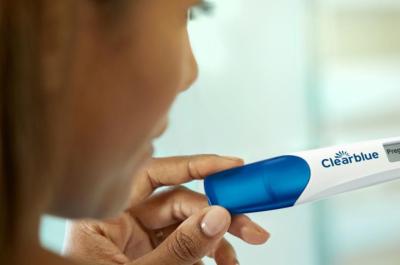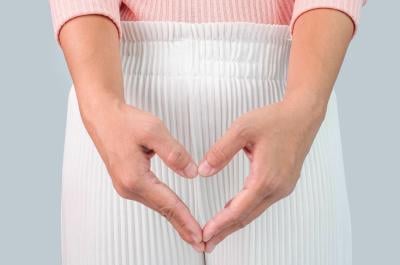Is it safe to exercise while trying to conceive?

“Can I exercise while trying to conceive?” is a common question women have when deciding to try to have a baby. While you should always discuss any concerns about physical activity with your healthcare provider first, moderate exercise is generally safe to do while trying to conceive. What’s more, maintaining a healthy weight and active lifestyle can even increase your chances of getting pregnant.
When it comes to exercise and fertility, there are a few benefits and considerations to be aware of, as well as what types of exercises are generally considered safe and how to best approach physical activity going forward.
In this article
The benefits of exercise while trying to conceive
Moderate-intensity aerobic exercise is one of the most important things you can do for your health. According to the Centers for Disease Control and Prevention (CDC), regular exercise helps with weight management and brain health, reduces disease, strengthens your bones and muscles, and improves your ability to do everyday activities.1 None of that stops when you decide to try to conceive.
Maintaining your current exercise regimen or even starting a new regimen of low- to moderate-intensity exercise can help ensure you’re in good physical shape for pregnancy and birth. Exercise can also help you reduce stress and achieve an ideal weight, both of which can positively impact fertility.
One study conducted between the years 1991 and 1999 followed 17,544 women without a history of infertility for eight years to see if following a regular exercise routine and sticking with a well-balanced diet impacted fertility. The result? Those who followed the study’s guidelines were associated with a 69% lower risk of ovulatory disorder infertility, suggesting exercise and nutrition may be beneficial.2
Exercise can impact body weight, and studies suggest that weight (both low and high) can affect the amount of time it can take to conceive. In one study published in 2004, women with low body mass indexes (BMIs under 19), took an average of 29 months to conceive. Women with BMIs between 19 and 24 took 6.8 months to conceive. Those with BMIs between 25 and 39 took 10.6 months to conceive, and those with BMIs over 39 took 13.3 months to conceive.3
Additionally, a meta-analysis of 40 studies published between 1966 and 2016 concluded that for women who are overweight or obese and struggle with infertility, losing some amount of weight via exercise and making changes to their diet may increase the chances of pregnancy.4
Women with obesity also tend to have more issues with ovulation. Data included in the American Society for Reproductive Medicine’s 2021 obesity and reproductive committee opinion illustrates that the risk of anovulatory infertility increases as BMI rises.5 In anovulatory women with obesity, weight loss interventions, including exercise, have improved the chance of unassisted conception.5
Exercise while trying to get pregnant: What is considered safe?
It’s important to talk to your healthcare provider about the impact your physical activity will have on your personal fertility journey. Most studies show that moderate exercise is beneficial while trying to conceive. Vigorous exercise, however, may only be beneficial to those with a high body-fat percentage.6,7
According to the CDC, some examples of moderate activities8 include:
- Walking at a moderate or brisk pace
- Hiking
- Gentle bicycling
- Yoga (but it's probably best to stay clear of Bikram or hot yoga)
- Aerobic dancing
- Strength training using lighter weights
- Tennis (doubles can be less strenuous than singles)
- Golf
- Swimming
This comprehensive list from the CDC8 serves as a guide, as does this list from the National Heart, Lung, and Blood Institute9 of common chores (yes, chores can count as physical activity!) and sporting activities. Also, just because the CDC qualifies running as a vigorous exercise doesn’t mean you should stop running before trying to conceive, especially if you’re an experienced runner. Same goes for your beloved Pilates or barre classes — just because they’re not on these lists doesn’t mean they’re off limits. Talk to your healthcare provider to develop an exercise plan that’s best for you.
What are the best forms of exercising while trying to get pregnant? The simple answer is: the ones you enjoy the most and you’re most likely to do. Physical activity that focuses on strengthening your core (your abdominal and back muscles) can help you during pregnancy. Exercise that gets your heart rate pumping can help you build up endurance. Swimming is a great zero-impact exercise (which many women really love once pregnant). But the most important thing is finding a physical activity that you’ll not only do repeatedly, but that makes you feel good while doing it (and is approved by your healthcare provider).
How much and how often can you exercise while trying to conceive?
The American College of Obstetricians and Gynecologists (ACOG) recommends 150 minutes of moderate physical activity per week (or five 30-minute workouts per week).10 Try to focus on muscle-strengthening activities two or more days per week.
Can you exercise during ovulation and implantation?
You’ve likely heard the luteal phase of the menstrual cycle, which lasts from the day after ovulation until the day before your period starts, referred to as “the two week wait.” And a well-meaning family member or friend may have shared the common myth, “Don’t exercise during the two-week wait.”
Some people say the average length of the luteal phase is 14 days, but there is a broad range of what’s considered normal. The length of the luteal phase can differ from woman to woman and from cycle to cycle. It can vary based on the length of your menstrual cycle and at which point you ovulate during your cycle.
The luteal phase plays an important role in early pregnancy, as it’s the time when the uterus prepares for the implantation of a fertilized egg. One study conducted over 27 months, from 2013 to 2016, shows that higher levels of physical activity can decrease the luteal phase length.6 A short luteal phase, defined as being 11 days or fewer from the day of ovulation to the first day of the next period, may not give the uterus lining enough time to thicken sufficiently to be able to support implantation of a fertilized egg. However, this same study maintains that moderate physical activity was associated with improved fertility among women.
Now is not the best time to start a new, intense exercise routine. Gentle, moderate exercise is best. If you’re already regularly engaged in vigorous physical activity, talk to your healthcare provider for advice on what to do during your luteal phase.
Some exceptions to exercising while trying to conceive
- If you regularly engage in vigorous physical exercise: More research is needed on the effects of exercise and ovulation. However, one comprehensive review of studies published up to April 2016 showed an increased risk of anovulation in women who exercised heavily, more than 60 minutes a day.11 Of note, this same study showed a reduced risk of anovulatory infertility in women who vigorously exercised 30 to 60 minutes per day.11
- If you’re a competitive athlete: The ACOG recommends maintaining close communication with your healthcare provider due to an often-strenuous training schedule.12
- If you are about to begin or are in the middle of IVF treatments: Talk to your doctor. It’s unlikely that physical activity will have a negative effect on IVF success (and some physical activity may even be beneficial), but it’s important to follow the plan put forth by your healthcare provider.13
Trying to conceive can be both joy-filled and nerve-wracking. Working out while trying to conceive can be a great way to de-stress, kick your endorphins into gear and help you feel like you have an active role in something that so often can feel out of your hands. So put down your phone, head out the door and go take a brisk walk. You’ll be glad you did.

Looking for insights on your health journey? Clearblue® sends you curated, science-backed articles right to your inbox.
Sources
- Physical Activity: Benefits of Physical Activity,” (November 1, 2021), Centers for Disease Control and Prevention, https://www.cdc.gov/physicalactivity/basics/pa-health/index.htm
- Chavarro, J. E., Rich-Edwards, J. W., Rosner, B. A., Willett, W. C., “Diet and Lifestyle in the Prevention of Ovulatory Disorder Infertility,” (November 2007), Obstetrics & Gynecology, 110(5), 1050-1058, doi: 10.1097/01.AOG.0000287293.25465.e1
- Hassan, M. A. M., Killick, S. R., “Negative lifestyle is associated with a significant reduction in fecundity,” (February 1, 2004), Fertility and Sterility, 81(2), 384-392, https://www.fertstert.org/article/S0015-0282(03)02846-2/fulltext
- Best, D., Avenell, A., Bhattacharya, S., “How effective are weight-loss interventions for improving fertility in women and men who are overweight or obese? A systematic review and meta-analysis of the evidence,” (November-December 2017), Human Reproduction Update, 23(6), 681–705, https://doi.org/10.193/humupd/dmx027
- “Obesity and reproduction: committee opinion,” (September 25, 2021), Practice Committee of the American Society for Reproductive Medicine, https://www.asrm.org/globalassets/asrm/asrm-content/news-and-publications/practice-guidelines/for-non-members/obesity_and_reproduction.pdf
- McKinnon, C. J., Hatch, E. E., Rothman, K. J., Wesselink, A. K., Hahn, K. A., Wise, L. A., “Body mass index, physical activity and fecundability in a North American preconception chort study,” (August 1, 2016), Fertility and Sterility, 106(2), 451-459, https://www.fertstert.org/article/S0015-0282(16)61103-2/fulltext
- Wise, L. A., Rothman, K. J., Mikkelsen, E. M., Sørensen, H. T., Riis, A. H., Hatch, E. E., “A prospective cohort study of physical activity and time to pregnancy,” (May 2012), Fertility and Sterility, 97(5), https://www.fertstert.org/action/showPdf?pii=S0015-0282%2812%2900259-2
- “General Physical Activities Defined by Level of Intensity,” U.S. Department of Health and Human Services, Public Health Service, Centers for Disease Control and Prevention, National Center for Chronic Disease Prevention and Health Promotion, Division of Nutrition and Physical Activity, (table adapted from Ainsworth B. E., Haskell W. L., Leon A. S. et al, “Compendium of physical activities: classification of energy costs of human physical activities,” Medicine and Science in Sports and Exercise, 1993, 25(1), 71-80; adapted with technical assistance from Ainsworth, B.), https://www.cdc.gov/nccdphp/dnpa/physical/pdf/pa_intensity_table_2_1.pdf
- “Guide to Physical Activity,” (n.d.), National Heart, Lung, and Blood Institute, U.S. Department of Health & Human Services, https://www.nhlbi.nih.gov/health/educational/lose_wt/phy_act.htm
- “Good Health Before Pregnancy: Pre-pregnancy Care,” (December 2021), The American College of Obstetricians and Gynecologists, https://www.acog.org/womens-health/faqs/good-health-before-pregnancy-prepregnancy-care
- Hakimi, O., Cameron, L. C., “Effect of Exercise on Ovulation: A Systematic Review.,” (August 2017), Sports Medicine, 47, 1555–1567, https://doi.org/10.1007/s40279-016-0669-8
- “Prepregnancy Counseling,” (January 2019), The American College of Obstetricians and Gynecologists, Committee Opinion, No. 762, https://www.acog.org/clinical/clinical-guidance/committee-opinion/articles/2019/01/prepregnancy-counseling
- Gaskins, A. J., Williams, P. L., Keller, M. G., Huaser, R., Chavarro, J. E., “Maternal physical and sedentary activities in relation to reproductive outcomes following IVF,” (October 1, 2016), Reproductive Biomedicine Online, 33(4), 513-521, https://www.rbmojournal.com/article/S1472-6483(16)30406-0/fulltext







